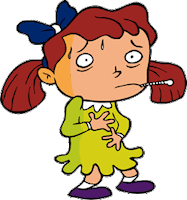Food Poisons

by Maleeha Khan ‘19
It’s very common for teenagers worldwide to choose prepackaged foods in place of a homemade snack. These prepackaged snacks are very convenient for students that have an overload of work or an extremely busy schedule, since they come cheap and are readily available. If a teen is hungry, they can simply buy a snack and satiate whatever hunger they may have. But most don’t realize the detrimental health effects prepackaged foods may have on their physiology. In many of these snacks, there are an overload of additives and preservatives that may raise the risk and likelihood of diseases in the forms of diabetes, heart disease, obesity, cancer, and other illnesses.
One of the most common offenders as a harmful food preservative is high fructose corn syrup (HFCS), but in some places, it is also called glucose-fructose syrup. HFCS is a highly refined artificial sweetener that is found in many preserved foods, which range from bakery goods to soft drinks to childrens’ medication. Studies have shown that when high fructose corn syrup is consumed, it can lead to a fatty liver, diabetes, heart attacks, strokes, obesity, and cancer. Unfortunately still, this isn’t the only harmful preservative on the market.
Other harmful food additives are food dyes. The more common ones are Red #40, Blue #1, Blue #2, and Yellow #6. Some of their sources are questionable, but the side effects of consumption are even more dangerous. Food dyes are notoriously hard to avoid, as they appear in both processed and unprocessed foods to make them look more attractive They are known to cause hyperactivity, learning impairments, internal irritability, and cancer. Yet even with this negative health effects, food dyes frequently appear in food, drinks, on their own, and in other consumable items.
So why are such harmful additives in the market? The reason may be that these additives are both cheap and widely used by food corporations. The additives have an inexpensive price, paired with a significant lack of federal regulations, keep these synthetic materials in our food without consequence. Another reason why they haven’t yet disappeared from our foods is the lack of consumer education. Not many are aware of the harm that these additives cause, and with a fast-moving society, not many have time to do the research for their health. Most would rather eat a quick snack first and worry about what they’re consuming later, but this may lead to a sickly life from the side effects of additives.
But this should change for the greater good. The younger generations of the world will face the brunt of these negative side effects if we continue to consume these preservatives. Teens should devote time and attention to gain knowledge about what these harmful synthetics can do. We can push these harmful additives out of our diets by avoiding foods with additives and not purchasing or consuming them. If the younger generations manage to change how we perceive foods with potential harm, we all may be better off with healthier lives.